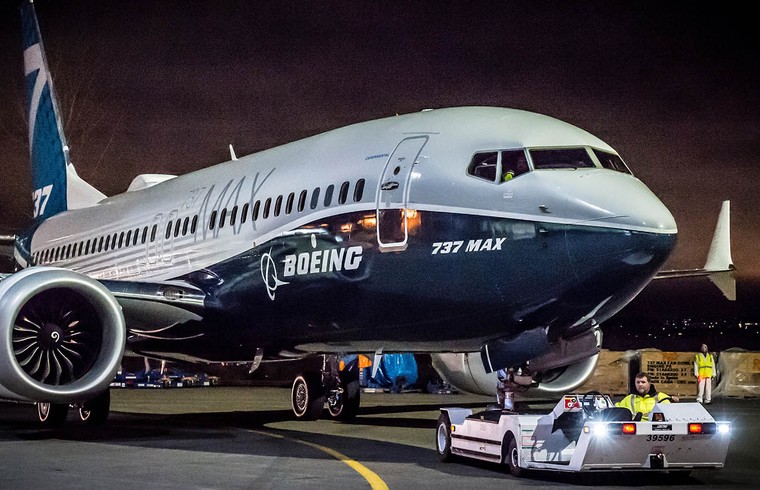Uma no antes do acidente com o avião da Lion Air fabricante sabia de problemas do sistema de controle de voo

Quase um ano antes do acidente com o 737 MAX da Lion Air, a Boeing já sabia dos possíveis problemas com o software do avião. Uma funcionalidade que deveria ser padrão, que informa os pilotos sobre discrepâncias entre os sensores de Ângulo de Ataque (AoA, na sigla em inglês), era apenas ativado se a companhia aérea comprasse um pacote adicional, vendido como opcional.
Em comunicado divulgado no último domingo (5), a Boeing afirmou que a diretoria só ficou sabendo do problema após o acidente na Indonésia. Todavia, o fabricante não havia informado previamente as companhias aéreas ou mesmo as autoridades aeronáuticas sobre o problema e nem a necessidade desse pacote adicional para casos de falhas no sensor AoA, algo que constava nos relatórios da engenharia desde 2017.
De acordo com investigação preliminar, o acidente com o 737 MAX 8, da Lion Air, ocorre após o sistema MCAS interpretar de forma equivocada dados errados dos indicadores AoA. Com parâmetros incorretos o MCAS agiu conforme programado para a situação reportada pelo AoA, baixando o nariz da aeronave. Os pilotos não tinham indicações sobre problemas nos indicadores dos sensores, iniciando assim uma cadeia de reações que levou ao acidente.
A Boeing comenta que os sensores AoA ou o alerta de discrepância são necessários para uma operação segura. Em comunicado a empresa assegura que todos os aviões entregues, incluindo o 737 MAX, os dados e informações de voo necessários para operação segura são fornecidos independentemente da versão, com dados exibidos na cabine de pilotagem nas telas primárias. “Nem o indicador do ângulo de ataque, nem o alerta de Discordância da AoA são necessários para a operação segura do avião. Eles fornecem apenas informações suplementares e nunca foram considerados recursos de segurança em aviões comerciais”, afirma a nota.
NOTA DA BOEING NA ÍNTEGRA (EM INGLÊS)
On every airplane delivered to our customers, including the MAX, all flight data and information needed to safely operate the aircraft is provided in the flight deck on the primary flight deck displays. This information is provided full-time in the pilots’ primary field of view, and it always has been.
Air speed, attitude, altitude, vertical speed, heading and engine power settings are the primary parameters the flight crews use to safely operate the airplane in normal flight. Stick shaker and the pitch limit indicator are the primary features used for the operation of the airplane at elevated angles of attack. All recommended pilot actions, checklists, and training are based upon these primary indicators. Neither the angle of attack indicator nor the AOA Disagree alert are necessary for the safe operation of the airplane. They provide supplemental information only, and have never been considered safety features on commercial jet transport airplanes.
The Boeing design requirements for the 737 MAX included the AOA Disagree alert as a standard, standalone feature, in keeping with Boeing’s fundamental design philosophy of retaining commonality with the 737NG. In 2017, within several months after beginning 737 MAX deliveries, engineers at Boeing identified that the 737 MAX display system software did not correctly meet the AOA Disagree alert requirements. The software delivered to Boeing linked the AOA Disagree alert to the AOA indicator, which is an optional feature on the MAX and the NG. Accordingly, the software activated the AOA Disagree alert only if an airline opted for the AOA indicator.
When the discrepancy between the requirements and the software was identified, Boeing followed its standard process for determining the appropriate resolution of such issues. That review, which involved multiple company subject matter experts, determined that the absence of the AOA Disagree alert did not adversely impact airplane safety or operation. Accordingly, the review concluded, the existing functionality was acceptable until the alert and the indicator could be delinked in the next planned display system software update. Senior company leadership was not involved in the review and first became aware of this issue in the aftermath of the Lion Air accident.
Approximately a week after the Lion Air accident, on November 6, 2018, Boeing issued an Operations Manual Bulletin (OMB), which was followed a day later by the FAA’s issuance of an Airworthiness Directive (AD). In identifying the AOA Disagree alert as one among a number of indications that could result from erroneous AOA, both the OMB and the AD described the AOA Disagree alert feature as available only if the AOA indicator option is installed.
Boeing discussed the status of the AOA Disagree alert with the FAA in the wake of the Lion Air accident. At that time, Boeing informed the FAA that Boeing engineers had identified the software issue in 2017 and had determined per Boeing’s standard process that the issue did not adversely impact airplane safety or operation. In December 2018, Boeing convened a Safety Review Board (SRB) to consider again whether the absence of the AOA Disagree alert from certain 737 MAX flight displays presented a safety issue. That SRB confirmed Boeing’s prior conclusion that it did not. Boeing shared this conclusion and the supporting SRB analysis with the FAA.
Boeing is issuing a display system software update, to implement the AOA Disagree alert as a standard, standalone feature before the MAX returns to service. When the MAX returns to service, all MAX production aircraft will have an activated and operable AOA Disagree alert and an optional angle of attack indicator. All customers with previously delivered MAX airplanes will have the ability to activate the AOA Disagree alert.
